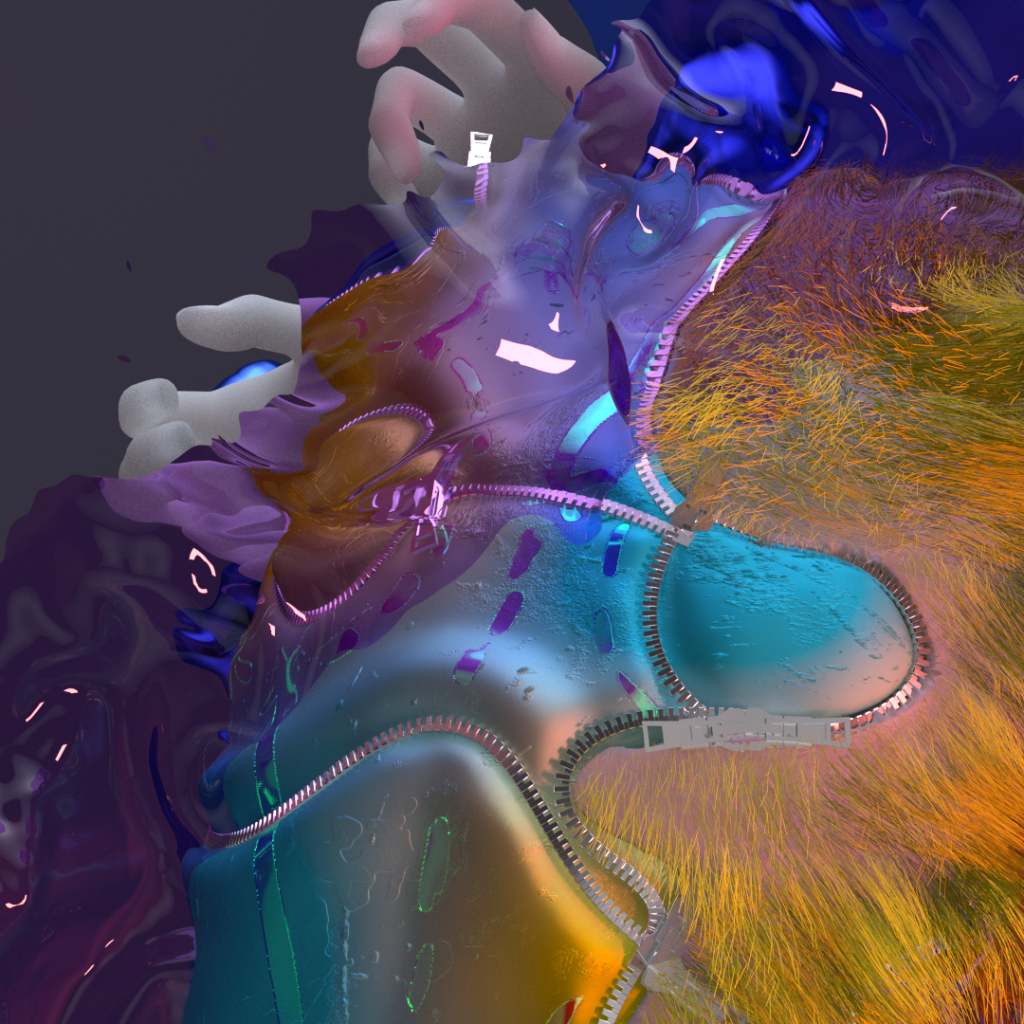
“Anesthesia”
Androgynes in syncopated swirling blues and blooms: an interview with Clara Luzian
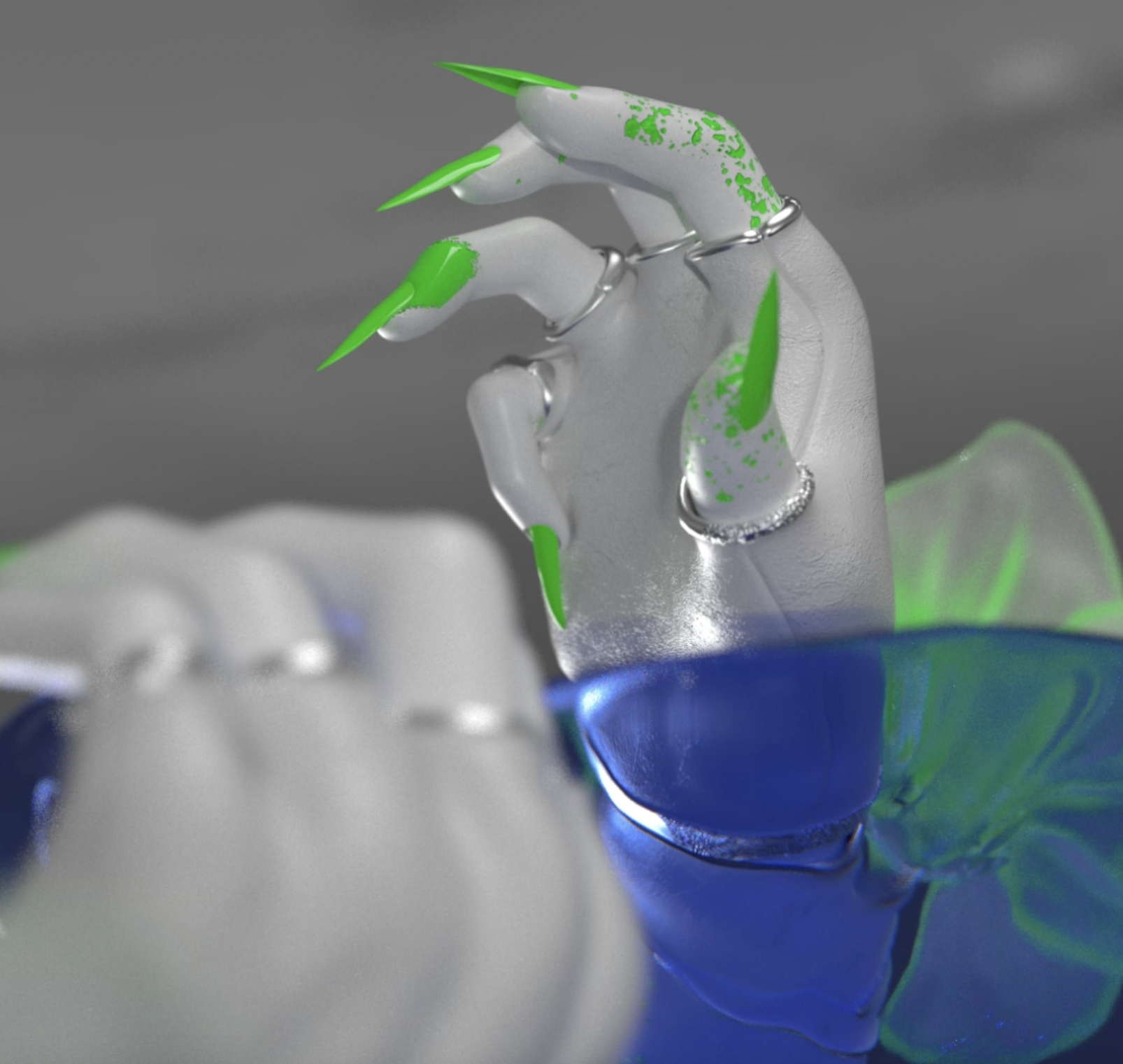
A hand is the first thing we see.
Surrounded by a translucent ribbon of blue, it looks like it’s reaching up from below the surface of a body of water. The hand, a pearlescent grey, is adorned with silver rings and long, sharp neon green fingernails.
The focus of Argentinian digital artist Clara Luzian’s recent work, “Visual Syncopation,” is a humanoid figure consisting of a head, neck, and a pair of arms. Below the neck appears to be a bralette held up by a collar with an O-Ring. Nothing fills out the clothing…and there’s nothing that attaches the arms to the neck. Indeed, our minds fill in the visual gaps between the body parts before we recognize that there are missing pieces. The subject’s head is hairless and its eyes are black underneath a pair of thick, bushy brows. Its tongue sticks out through its lips.
The subject, surrounded by streams of blue as well as flowers tinged with the same shade of green as its fingernails, rotates in space. It’s not a smooth turn; it’s glitchy and rapidly back and forth—a literal rendering of the concept of “visual syncopation.” Smooth tones in a minor key punctuated by percussive beats accompany the work.
“It was like a “come and go” between the musical part and the visual part,” she adds. “It was fun.”
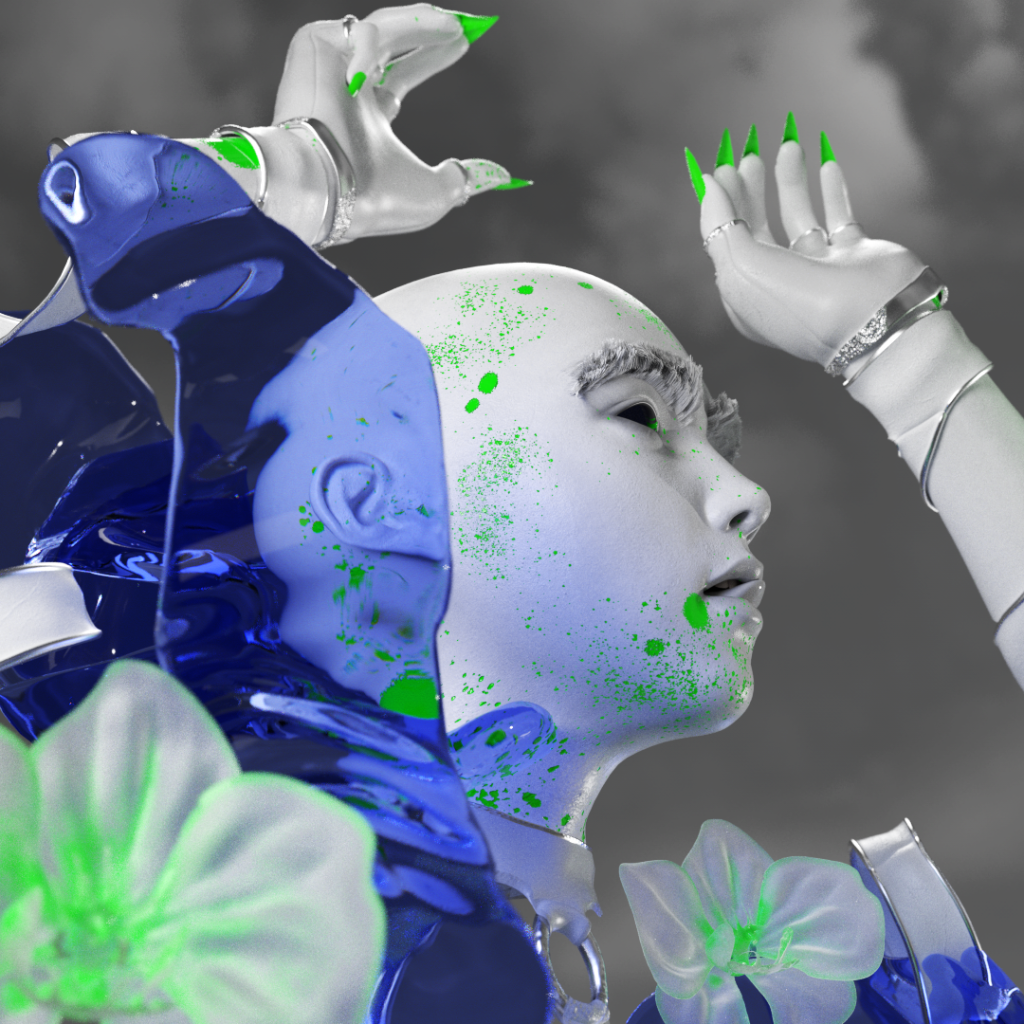
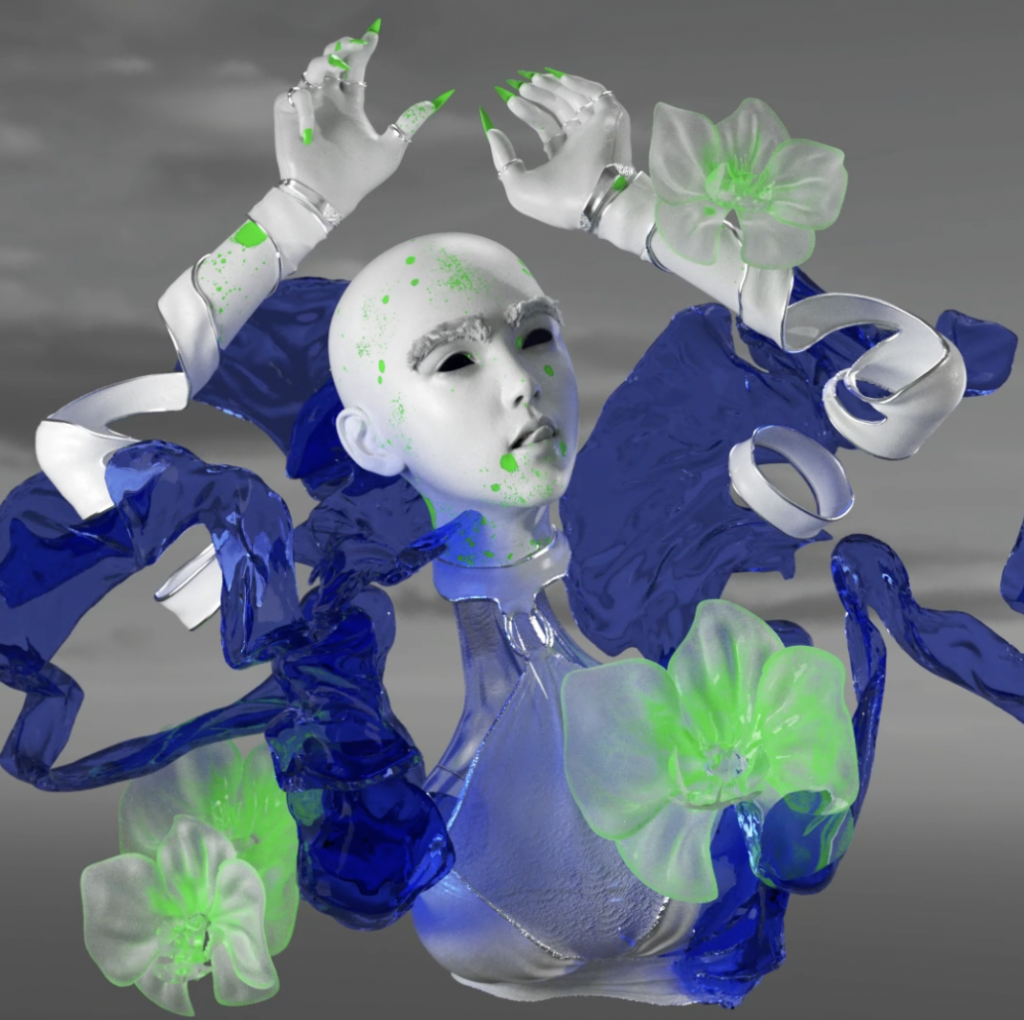
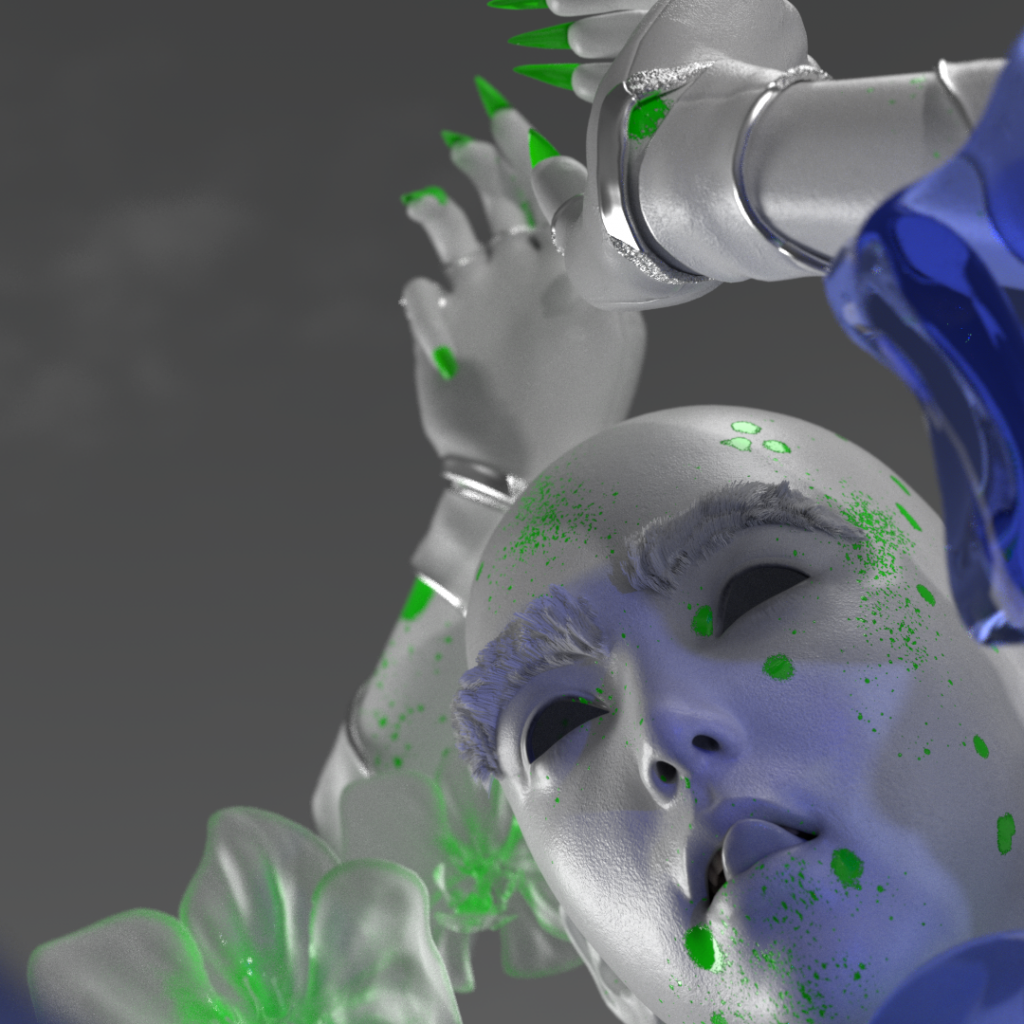
The subject of “Visual Syncopation” is arresting in its form. Not only because of the absent body parts, but because the figure is completely and purely androgynous. The mannequin-like character has a seamless blend of traditionally feminine and masculine accessories and features…and a notable lack of discernible sex characteristics. Luzian shares that she started to interrogate the socially-prescribed binary of feminine and masculine in her own life a year ago. The act of questioning the construct of gender is present in much of Luzian’s work beyond “Visual Syncopation.”
The other curious aspect of the work is how the subject is posed. Their arms are raised in the air and they are surrounded by swirling blues and blooms. It strikes as mythological and folkloric, witchy and yet also playful, like the character is manipulating water or even manipulating the overlaying sound itself.

Luzian described the pose, and the accompanying elements, as simply part of the syncopation.
And the subject’s pose?
Clara Luzian, also known as Render Fruit (“I’m vegan and I feel like my renders are fueled by plants and fruits and vegetables!”) has become notorious for pieces like “Visual Syncopation.” Her online portfolio is filled with digitally rendered works of surrealist art that suck you in and keep you staring at your screen. Many of her pieces are animated; others are stagnant. All of them are visually striking—trippy, even—and intensely haunting and extraterrestrial. Spending time with a piece by Luzian is like getting transported to and lost in a world that you would read about in a Tanith Lee novel.
When asked about her sources of inspiration, Luzian says that everything just comes from her thoughts, however random they might be.
Luzian has been creating art for ten years. Her background is in graphic design; she says that she got bored because the images were so still.
“I started animating them in my head,” she remembers. She knew that she had to study animation, but at the time, there weren’t a lot of schools or programs for animation that were near her home. So, she taught herself.
She started with Adobe After Effects and then moved onto Cinema 4D. Jumping into the 3D pool led her to where she is today.


Luzian’s first introduction to the realm of NFTs was in February 2019 with an email from the folks at MakersPlace. At the time, Luzian didn’t know what an NFT was, but made a profile with them anyway. Later that year, she was scouted by SuperRare and her career in the digital art space skyrocketed.
Community in the digital art scene is so special and so important to Luzian that she’s hesitant to name her favorite artists.
“I have many, but I’m afraid I’ll forget someone!” she says. “I really admire Nicole Ruggiero, Alessio de Vecchi, and Fvckrender [to name just a few]. It’s a really talented community!”
In addition to finding community among fellow digital artists, there’s another appealing aspect of the NFT sector:

Chloé Harper Gold is a writer and editor based in New York. Her work has been published in 71 Magazine, Honeysuckle Magazine, Nightmarish Conjurings, Horror Film Central, High Times, Dread Central, Crystal Lake Publishing's Shallow Waters Volume IV, and 100-Word Zombie Bites. Chloé received her MFA in Creative Writing from The New School.
Hash Recipes

Curated Conversations: ALIENQUEEN
SuperRare Labs Senior Curator An interviews ALIENQUEEN about psychedelics, death, and her journey in the NFT space.
Negative Space




Curated Conversations: ALIENQUEEN
SuperRare Labs Senior Curator An interviews ALIENQUEEN about psychedelics, death, and her journey in the NFT space.
Weekly Top 10




Curated Conversations: ALIENQUEEN
SuperRare Labs Senior Curator An interviews ALIENQUEEN about psychedelics, death, and her journey in the NFT space.

